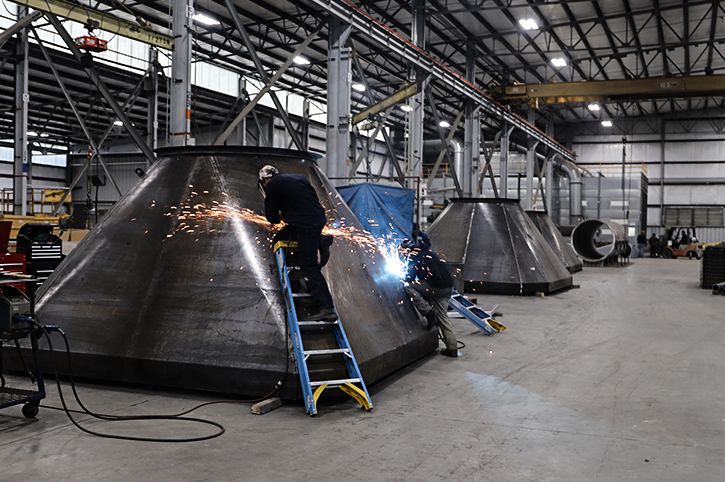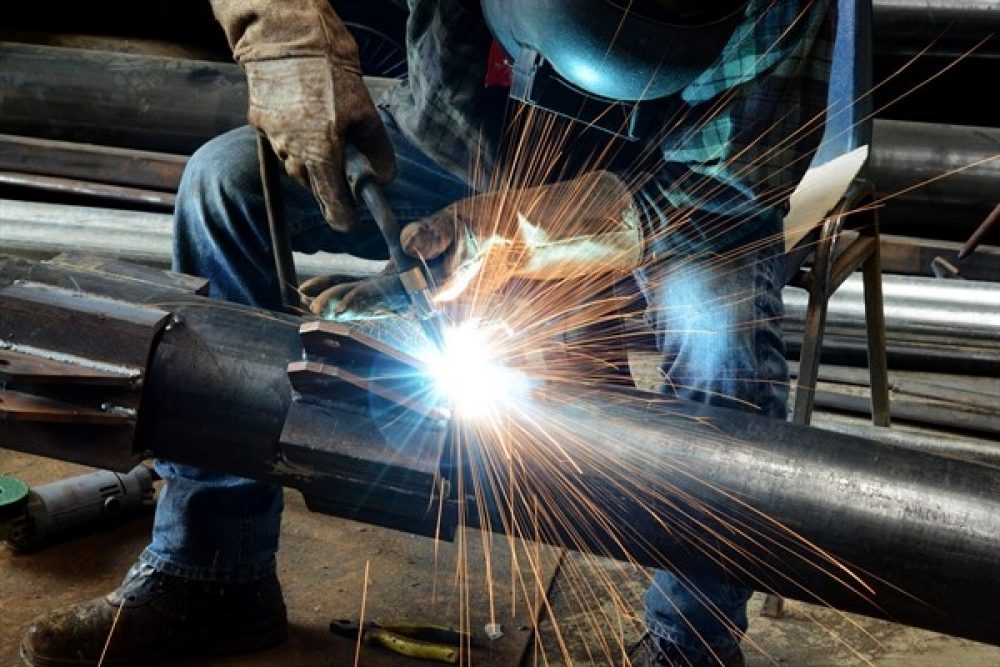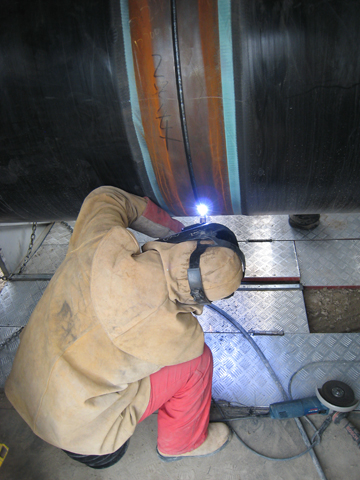Typical Welding Repair Work Issues and Just How to Address Them Effectively
Welding repairs often come across an array of problems that can jeopardize the stability of the last item. Usual issues include poor infiltration, porosity, and imbalance, among others. Each issue provides special challenges that need certain strategies for resolution. Recognizing these issues is important for welders intending to boost their abilities and outcomes. This conversation will check out these usual welding repair work concerns and efficient methods to resolve them.
Insufficient Penetration
Insufficient penetration takes place when the weld steel fails to totally fuse with the base product, leading to weak joints and possible architectural failings. This problem typically originates from not enough warmth input, incorrect electrode angle, or improper welding rate. Welders may experience insufficient penetration due to a mistake of the essential parameters for a details material density or type. In addition, contamination on the base product's surface can prevent reliable bonding, aggravating the trouble. To attend to poor penetration, welders need to ensure appropriate setups on their devices and maintain a tidy job surface. Normal examination of welds is recommended to recognize any kind of deficiencies early, enabling timely adjustments and the avoidance of endangered architectural stability in welded assemblies.
Porosity
Porosity is a common problem in welded joints that materializes as little gas bubbles trapped within the weld steel. This issue can endanger the honesty of the weld, causing minimized toughness and possible failure under stress. Belgrade Welding. Porosity generally emerges from contamination, wetness, or improper welding methods, which allow gases to leave right into the molten weld pool. To resolve porosity, welders ought to assure appropriate surface area preparation, maintain a tidy workplace, and use appropriate welding parameters. In addition, choosing the best filler material and securing gas can reduce gas entrapment. Routine inspection and screening of welds can aid determine porosity early, ensuring timely rehabilitative actions are taken, thus maintaining the quality and integrity of the bonded framework
Misalignment
Imbalance in welding can emerge from different aspects, consisting of inappropriate arrangement and thermal development. Comprehending the origin triggers is essential for efficient resolution. Numerous correction techniques are readily available to realign components and assure structural stability.
Reasons for Misalignment
Welding imbalance frequently stems from a selection of underlying problems that can jeopardize architectural honesty. One main reason is improper fit-up of components before welding, which can cause gaps and unequal surface areas. Variations in thermal expansion throughout the welding procedure can likewise result in distortion, especially if the products being signed up with have various coefficients of growth. Furthermore, insufficient fixturing and securing might stop working to hold components firmly in position, bring about motion during welding. Poorly kept tools, consisting of welding equipments and devices, may present variances in the weld bead, additional adding to misalignment. Operator error, stemming from insufficient training or experience, can also play a considerable role in developing misaligned welds.

Correction Techniques Offered
Dealing with imbalance efficiently needs a combination of corrective techniques customized to the details concerns handy. One usual method is the use of components or jigs to hold elements in the right setting during welding, making certain constant placement. Furthermore, pre-heating the products can help in reducing distortion and boost fit-up. For substantial imbalance, mechanical adjustment techniques, such as making use of hydraulic jacks or clamps, can be used to remedy the placement prior to welding. Post-weld warmth treatment might also be essential to relieve tensions brought on by imbalance. Mindful examination and adjustment during the arrangement phase can stop imbalance concerns from coming to be significant problems, promoting a smoother welding process and enhancing overall structural integrity.
Distortion
Distortion is an usual obstacle in welding that can emerge from various aspects, consisting of uneven heating & cooling. Understanding the root causes of distortion is important for implementing effective avoidance strategies. Resolving this issue not just boosts structural stability but additionally enhances the total high quality of the weld.
Root causes of Distortion
When subjected to the intense warm of welding, materials commonly go through modifications that can cause distortion. This phenomenon primarily emerges from thermal development and tightening throughout the welding process. As the weld area heats up, the material broadens; upon cooling, it gets, which can develop internal stresses. In enhancement, unequal heating across a workpiece can exacerbate these tensions, resulting in bending or bending. The sort of product also plays a considerable role; steels with varying thermal conductivity and coefficients of expansion might react in a different way, causing unpredictable distortions. Bad joint layout and inadequate fixturing can add to misalignment throughout welding, enhancing the possibility of distortion. Comprehending these reasons is vital for reliable welding repair work and prevention approaches.
Avoidance Techniques
Reliable prevention methods for distortion throughout welding focus on controlling warmth input and guaranteeing proper joint layout. Keeping a consistent warm input helps to reduce thermal expansion and contraction, which can bring about distortion. Using strategies such as pre-heating the work surface can also decrease the temperature level slope, promoting uniform home heating. Additionally, selecting ideal joint designs, such as T-joints or lap joints, can enhance stability and lower stress and anxiety focus. Implementing appropriate fixturing to safeguard the work surfaces in position better aids in preserving alignment throughout the welding process. Ultimately, staggered welding sequences can distribute warm more uniformly, protecting against localized distortion. By using these approaches, welders can significantly lower the chance of distortion and enhance the general top quality of their welds.
Splitting
Splitting is a typical concern come across in welding repairs, usually arising from different variables such as incorrect cooling rates, material selection, or inadequate joint prep work. The incident of cracks can significantly compromise the honesty of the weld, causing potential failures during procedure. To address this issue, welders should initially examine the root triggers, ensuring that products are compatible and appropriately picked for the particular application. Furthermore, controlling the air conditioning price during the welding process is vital; quick air conditioning can generate tension and result in breaking. Proper joint design and preparation likewise add to minimizing the threat. Implementing these techniques can boost weld quality and longevity, ultimately lowering the possibility of breaking in ended up weldments.

Incomplete Combination
A considerable concern in welding fixings is incomplete blend, which occurs when the weld steel does not adequately bond with the base product or previous weld passes - Fabrication. This defect can cause weaknesses in the joint, possibly compromising the stability of the bonded framework. Elements adding to insufficient fusion include not enough warmth input, inappropriate welding strategy, and contamination of the surfaces being joined. To address this problem efficiently, welders should ensure proper pre-weld cleansing and surface area preparation, along with readjust their welding specifications to accomplish sufficient penetration and combination. Routine evaluation throughout the welding process can likewise assist recognize incomplete blend early, enabling for prompt corrective steps to boost the total visit this web-site quality of the weld
Overheating
While welding fixings can improve architectural integrity, overheating provides a significant difficulty that can bring about product deterioration. Extreme warmth throughout welding can alter the mechanical residential or commercial properties of steels, causing reduced toughness, increased brittleness, and bending. This phenomenon is particularly crucial in high-stress applications where architectural reliability is vital. Determining overheating can include aesthetic evaluations for discoloration or distortion, as well as keeping an eye on temperature throughout the welding procedure. To alleviate the risks connected with overheating, welders must employ proper techniques, such as managing warm input, i was reading this readjusting travel rate, and making use of ideal filler materials. Additionally, applying pre- and post-weld warmth treatments can help bring back material residential properties and boost the total quality of the repair work, guaranteeing lasting efficiency and security.
Regularly Asked Questions
What Are the Common Signs of a Welding Defect?

Just How Can I Examine My Welds for Top quality?
To examine welds for quality, one can use aesthetic evaluations, ultrasonic screening, and radiographic approaches. Each method ensures architectural stability, determines flaws, and validates adherence to defined criteria, ultimately improving the integrity of the welded joints.
What Safety Precautions Should I Take While Welding?
When welding, one should focus on security by using proper individual safety equipment, making certain correct ventilation, protecting flammable materials away, preserving a tidy workspace, and being aware of environments to prevent mishaps and injuries.
Can I Fix a Weld Without Renovating the Entire Joint?
Repairing a weld without renovating the entire joint is official statement feasible, depending upon the damages (Montana Mobile Welding and Repair). Methods such as grinding, adding filler material, or making use of a welding procedure can efficiently deal with specific imperfections while protecting the surrounding framework
What Devices Are Essential for Reliable Welding Repairs?
Important devices for efficient welding repairs consist of a welding maker, cable brush, grinder, safety gear, clamps, and filler products. Each device plays a crucial role in guaranteeing top quality and security throughout the repair procedure. Porosity usually develops from contamination, dampness, or incorrect welding strategies, which enable gases to escape into the liquified weld swimming pool. Poorly kept equipment, consisting of welding machines and tools, may present variances in the weld bead, further adding to misalignment. When subjected to the extreme warmth of welding, products typically undergo adjustments that can lead to distortion. Breaking is a typical issue come across in welding repairs, typically resulting from different aspects such as improper cooling prices, product option, or poor joint preparation. A considerable concern in welding repair work is insufficient blend, which takes place when the weld steel does not effectively bond with the base product or previous weld passes.
Comments on “Advanced weld correction methods from Belgrade Welding professionals”